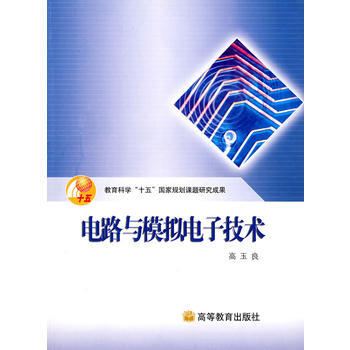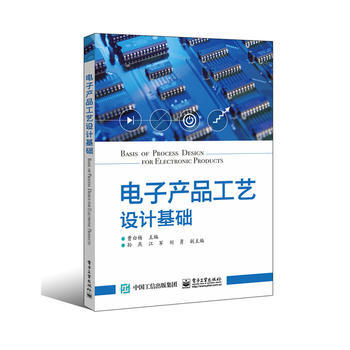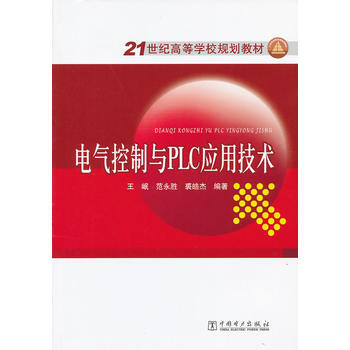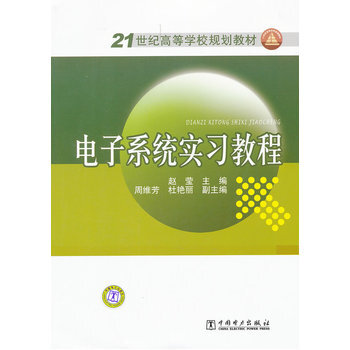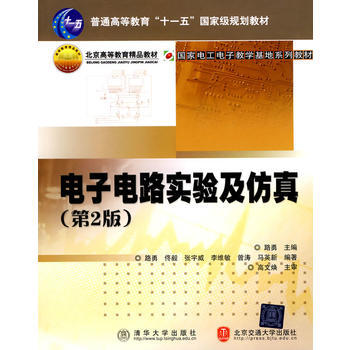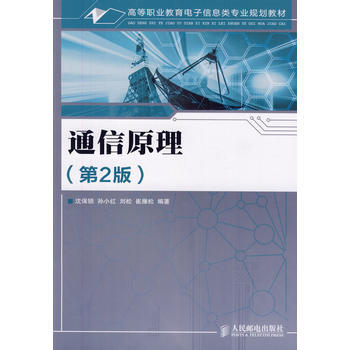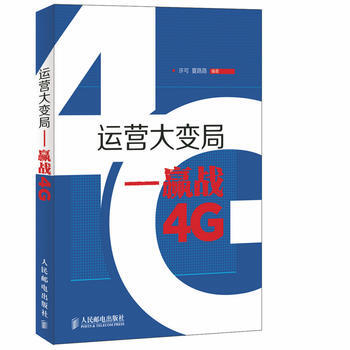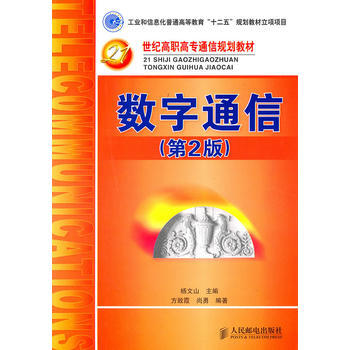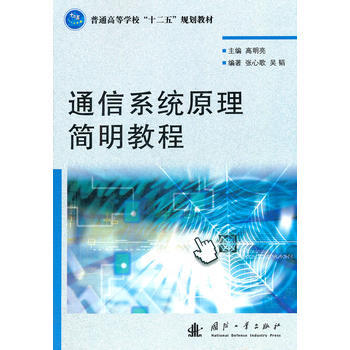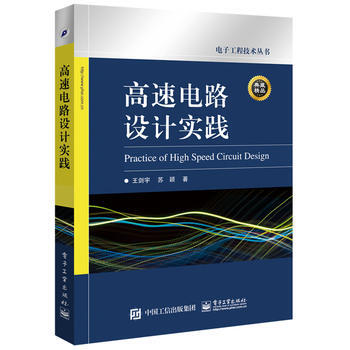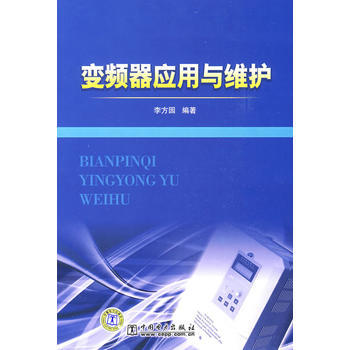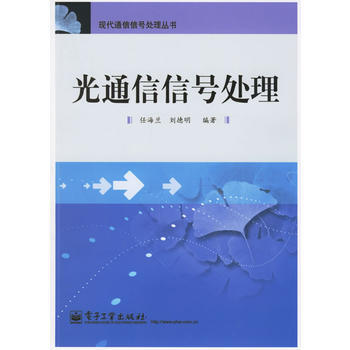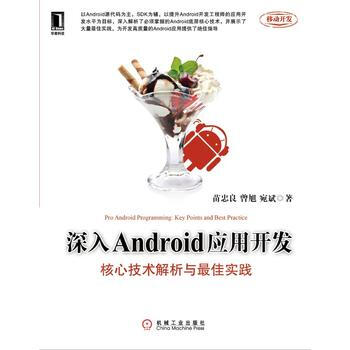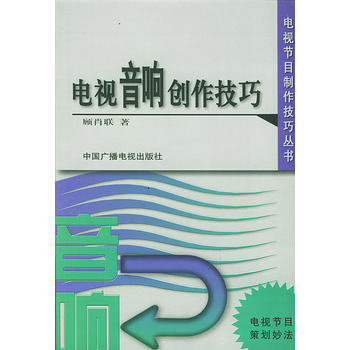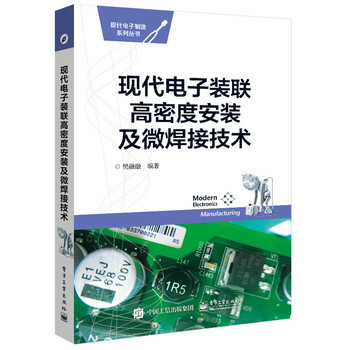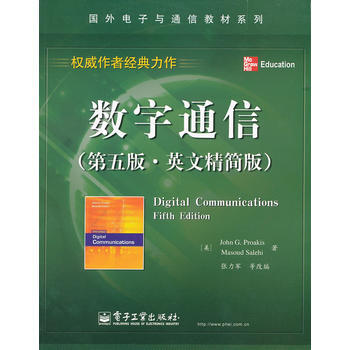
数字通信(第五版 英文精简版) epub pdf mobi txt 电子书 下载 2025
数字通信(第五版 英文精简版) epub pdf mobi txt 电子书 下载 2025
简体网页||繁体网页
下载链接1
下载链接2
下载链接3
发表于2025-03-13
商品介绍
数字通信(第五版 英文精简版) epub pdf mobi txt 电子书 下载 2025
相关书籍
书籍描述
基本信息
书名:数字通信(第五版 英文精简版)
定价:59.00元
售价:40.1元,便宜18.9元,折扣67
作者:(美)普罗科斯,(美)萨利希,张力军 等改编
出版社:电子工业出版社
出版日期:2012-01-01
ISBN:9787121153259
字数:
页码:
版次:1
装帧:平装
开本:
商品重量:0.781kg
编辑推荐
内容提要
本书是在《数字通信(第五版)》的基础上,根据国内的实际教学情况进行精简和改编的。主要的精简原则为:保留信号传输理论内容,舍去信息传输理论内容,并以传统而经典的数字传输理论为主,无线通信为辅。改编的部分主要是根据国内实际教学的常用习惯来进行的。精简后的内容主要涵盖:确定与*信号分析;数字调制方法;AWGN信道的*接收机;载波和符号同步;通过带限信道的数字通信;自适应均衡;多信道和多载波系统;数字通信用扩频信号;衰落信道:信道特征与信号传输;多天线系统。
目录
Chapter 1Introduction
1.1 Elements of a Digital CommunicationSystem
1.2 Communication Channels and TheirCharacteristics
1.3 Mathematical Models for CommunicationChannels
1.4 A Historical Perspective in the Development of
Digitalommunications
Chapter 2 Deterministic and Random SignalAnalysis
2.1 Representation of Bandpass Signals andSystems
2.1–1 Representation of Bandpass Signals/ 2.1–2 Response of aBandpass System to a Bandpass Signal
2.2 Signal Space Representation ofWaveforms
2.2–1 Vector Space Concepts / 2.2–2 Signal Space Concepts / 2.2–3Orthogonal Expansions of Signals /2.2–4 Gram-SchmidtProcedure
2.3 Some Useful RandomVariables
2.4 RandomProcesses
2.4–1 Wide-Sense Stationary Random Processes /2.4–2Cyclostationary Random Processes
2.5 Series Expansion of RandomProcesses
2.5–1 Sampling Theorem for Band-Limited RandomProcesses /2.5–2 TheKarhunen-Lo`eve Expansion
2.6 Bandpass Stationary StochasticProcesses
Problems
Chapter 3 Digital ModulationSchemes
3.1 Representation of Digitally ModulatedSignals
3.2 Memoryless ModulationMethods
3.2–1 Pulse Amplitude Modulation (PAM) / 3.2–2 Phase Modulation /3.2–3 Quadrature Amplitude Modulation /3.2–4 MultidimensionalSignaling
3.3 Signaling Schemes withMemory
3.3–1 Continuous-Phase Frequency-Shift Keying(CPFSK) /
3.3–2 Continuous-Phase Modulation (CPM)
3.4 Power Spectrum of Digitally ModulatedSignals
3.4–1 Power Spectral Density of a Digitally ModulatedSignalwith
Memory / 3.4–2 Power Spectral Density of LinearlyModulated
Signals / 3.4–3 Power Spectral Density ofDigitally Modulated
Signals with Finite Memory / 3.4–4Power Spectral Density of
Modulation Schemes with a MarkovStructure / 3.4–5 Power
Spectral Densities of CPFSK and CPM Signals
Problems
Chapter 4 Optimum Receivers for AWGNChannels
4.1 Waveform and Vector ChannelModels
4.1–1 Optimal Detection for a General Vector Channel
4.2 Waveform and Vector AWGNChannels
4.2–1 Optimal Detection for the Vector AWGN Channel /4.2–2Implementation of the Optimal Receiver for AWGN Channels / 4.2–3 AUnion Bound on the Probability of Error of Maximum LikelihoodDetection
4.3 Optimal Detection and Error Probability for Band-Limited
Signaling
4.3–1 Optimal Detection and Error Probability for ASK or
PAM Signaling / 4.3–2 Optimal Detection and ErrorProbability
for PSK Signaling / 4.3–3 Optimal Detection and ErrorProbability
for QAM Signaling / 4.3–4 Demodulation and Detection
4.4 Optimal Detection and Error Probability forPower-Limited
Signaling
4.4–1 Optimal Detection and Error Probability for Orthogonal
Signaling / 4.4–2 Optimal Detection and Error Probabilityfor
Biorthogonal Signaling / 4.4–3 Optimal Detection and Error
Probability for Simplex Signaling
4.5 Optimal Detection in Presence of Uncertainty:Noncoherent
Detection
4.5–1 Noncoherent Detection of Carrier Modulated Signals /4.5–2Optimal Noncoherent Detection of FSK Modulated Signals / 4.5–3Error Probability of Orthogonal Signaling with NoncoherentDetection / 4.5–4 Probability of Error for Envelope Detection ofCorrelated Binary Signals /4.5–5 Differential PSK (DPSK)
4.6 A Comparison of Digital SignalingMethods
4.6–1 Bandwidth and Dimensionality
4.7 Lattices and Constellations Based onLattices
4.7–1 An Introduction to Lattices / 4.7–2 Signal Constellationsfrom Lattices
4.8 Detection of Signaling Schemes withMemory
4.8–1 The Maximum Likelihood Sequence Detector
4.9 Optimum Receiver for CPMSignals
4.9–1 Optimum Demodulation and Detection of CPM /4.9–2 Performanceof CPM Signals / 4.9–3 Suboptimum Demodulation and Detection of CPMSignals
Problems
Chapter 5 Carrier and SymbolSynchronization
5.1 Signal ParameterEstimation
5.1–1 The Likelihood Function / 5.1–2 Carrier Recovery and
Symbol Synchronization in Signal Demodulation
5.2 Carrier PhaseEstimation
5.2–1 Maximum-Likelihood Carrier Phase Estimation /5.2–2 ThePhase-Locked Loop / 5.2–3 Effect of AdditiveNoise on the PhaseEstimate / 5.2–4 Decision-Directed Loops / 5.2–5Non-Decision-Directed Loops
5.3 Symbol TimingEstimation
5.3–1 Maximum-Likelihood Timing Estimation /5.3–2Non-Decision-Directed Timing Estimation
5.4 Joint Estimation of Carrier Phase and SymbolTiming
5.5 Performance Characteristics of MLEstimators
Problems
Chapter 6 Digital Communication Through Band-LimitedChannels
6.1 Characterization of Band-LimitedChannels
6.2 Signal Design for Band-LimitedChannels
6.2–1 Design of Band-Limited Signals for No Intersymbol
Interference—The Nyquist Criterion / 6.2–2 Design of Band-LimitedSignals with Controlled ISI—Partial-Response Signals / 6.2–3 DataDetection for Controlled ISI /6.2–4 Signal Design for Channels withDistortion
6.3 Optimum Receiver for Channels with ISI andAWGN
6.3–1 Optimum Maximum-Likelihood Receiver /6.3–2 A Discrete-TimeModel for a Channel with ISI /6.3–3 Maximum-Likelihood SequenceEstimation (MLSE)
for the Discrete-Time White Noise Filter Model
6.4 LinearEqualization
6.4–1 Peak Distortion Criterion /6.4–2 Mean-Square-Error (MSE)Criterion /
6.4–3 Performance Characteristics of the MSE Equalizer /6.4–4Fractionally Spaced Equalizers /6.4–5 Baseband and Passband LinearEqualizers
6.5 Decision-FeedbackEqualization
6.5–1 Coefficient Optimization /6.5–2 Performance Characteristicsof DFE
6.6 Reduced Complexity MLDetectors
Problems
Chapter 7 AdaptiveEqualization
7.1 Adaptive LinearEqualizer
7.1–1 The Zero-Forcing Algorithm /7.1–2 The LMS Algorithm /7.1–3Convergence Properties of the LMS Algorithm /7.1–4 Excess MSE dueto Noisy Gradient Estimates /7.1–5 Accelerating the InitialConvergence Rate
in the LMS Algorithm / 7.1–6 Adaptive Fractionally SpacedEqualizer—The Tap Leakage Algorithm /7.1–7 An Adaptive ChannelEstimator for ML
Sequence Detection
7.2 Adaptive Decision-FeedbackEqualizer
7.3 Recursive Least-Squares Algorithms for AdaptiveEqualization
7.3–1 Recursive Least-Squares (Kalman) Algorithm /7.3–2 LinearPrediction and the Lattice Filter
Problems
Chapter 8 Multichannel and MulticarrierSystems
8.1 Multichannel Digital Communications in AWGNChannels
8.1–1 Binary Signals / 8.1–2 M-ary Orthogonal Signals
8.2 MulticarrierCommunications
8.2–1 Single-Carrier Versus Multicarrier Modulation /8.2–2Capacity of a Nonideal Linear Filter Channel /8.2–3 OrthogonalFrequency Division Multiplexing (OFDM) /8.2–4 Modulation andDemodulation in an OFDM System /
8.2–5 An FFT Algorithm Implementation of an OFDM System /8.2–6Spectral Characteristics of Multicarrier Signals /8.2–7 Bit andPower Allocation in Multicarrier Modulation /8.2–8 Peak-to-AverageRatio in Multicarrier Modulation /8.2–9 Channel CodingConsiderations in Multicarrier Modulation
Problems
Chapter 9 Spread Spectrum Signals for DigitalCommunications
9.1 Model of Spread Spectrum Digital CommunicationSystem
9.2 Direct Sequence Spread SpectrumSignals
9.2–1 Error Rate Performance of the Decoder /9.2–2 SomeApplications of DS Spread Spectrum Signals /9.2–3 Effect of PulsedInterference on DS Spread Spectrum Systems / 9.2–4 Excision ofNarrowband Interference in DS Spread Spectrum Systems / 9.2–5Generation of PN Sequences
9.3 Frequency-Hopped Spread SpectrumSignals
9.3–1 Performance of FH Spread Spectrum Signals in an
AWGN Channel / 9.3–2 Performance of FH Spread Spectrum
Signals in Partial-Band Interference / 9.3–3 A CDMA System
Based on FH Spread Spectrum Signals
9.4 Other Types of Spread SpectrumSignals<
数字通信(第五版 英文精简版) epub pdf mobi txt 电子书 下载 2025
数字通信(第五版 英文精简版) 下载 epub mobi pdf txt 电子书 2025数字通信(第五版 英文精简版) pdf 下载 mobi 下载 pub 下载 txt 电子书 下载 2025
数字通信(第五版 英文精简版) mobi pdf epub txt 电子书 下载 2025
数字通信(第五版 英文精简版) epub pdf mobi txt 电子书 下载读者评价
评分
评分
评分
评分
评分
评分
评分
评分
数字通信(第五版 英文精简版) epub pdf mobi txt 电子书 下载 2025
数字通信(第五版 英文精简版) epub pdf mobi txt 电子书 下载 2025
分享链接
相关书籍
-
 电路与模拟电子技术 epub pdf mobi txt 电子书 下载
电路与模拟电子技术 epub pdf mobi txt 电子书 下载 -
 电子产品工艺设计基础 epub pdf mobi txt 电子书 下载
电子产品工艺设计基础 epub pdf mobi txt 电子书 下载 -
 21世纪高等学校规划教材 电气控制与PLC应用技术 epub pdf mobi txt 电子书 下载
21世纪高等学校规划教材 电气控制与PLC应用技术 epub pdf mobi txt 电子书 下载 -
 电路图与实体电路对照识读全彩演练 epub pdf mobi txt 电子书 下载
电路图与实体电路对照识读全彩演练 epub pdf mobi txt 电子书 下载 -
 21世纪高等学校规划教材 电子系统实习教程 epub pdf mobi txt 电子书 下载
21世纪高等学校规划教材 电子系统实习教程 epub pdf mobi txt 电子书 下载 -
 电子电路实验及仿真(第2版)(国家电工电子教学基地系列教材) epub pdf mobi txt 电子书 下载
电子电路实验及仿真(第2版)(国家电工电子教学基地系列教材) epub pdf mobi txt 电子书 下载 -
 通信原理(第2版) epub pdf mobi txt 电子书 下载
通信原理(第2版) epub pdf mobi txt 电子书 下载 -
 微波射频器件和天线的精细设计与实现 epub pdf mobi txt 电子书 下载
微波射频器件和天线的精细设计与实现 epub pdf mobi txt 电子书 下载 -
 基于VHDL的FPGA数字系统应用实践 epub pdf mobi txt 电子书 下载
基于VHDL的FPGA数字系统应用实践 epub pdf mobi txt 电子书 下载 -
 运营大变局 赢战4G epub pdf mobi txt 电子书 下载
运营大变局 赢战4G epub pdf mobi txt 电子书 下载 -
 数字通信(第2版)(工业和信息化普通高等教育“十二五”规划教材立项项目) epub pdf mobi txt 电子书 下载
数字通信(第2版)(工业和信息化普通高等教育“十二五”规划教材立项项目) epub pdf mobi txt 电子书 下载 -
 通信系统原理简明教程 epub pdf mobi txt 电子书 下载
通信系统原理简明教程 epub pdf mobi txt 电子书 下载 -
 高速电路设计实践 epub pdf mobi txt 电子书 下载
高速电路设计实践 epub pdf mobi txt 电子书 下载 -
 变频器应用与维护 epub pdf mobi txt 电子书 下载
变频器应用与维护 epub pdf mobi txt 电子书 下载 -
 地下矿井无线通信——基于RFID的传感器网络 epub pdf mobi txt 电子书 下载
地下矿井无线通信——基于RFID的传感器网络 epub pdf mobi txt 电子书 下载 -
 光通信信号处理——现代通信信号处理丛书 epub pdf mobi txt 电子书 下载
光通信信号处理——现代通信信号处理丛书 epub pdf mobi txt 电子书 下载 -
 深入Android应用开发:核心技术解析与佳实践 epub pdf mobi txt 电子书 下载
深入Android应用开发:核心技术解析与佳实践 epub pdf mobi txt 电子书 下载 -
 电视音响创作技巧 epub pdf mobi txt 电子书 下载
电视音响创作技巧 epub pdf mobi txt 电子书 下载 -
 通信终端产品检测项目化教程 9787568211185 epub pdf mobi txt 电子书 下载
通信终端产品检测项目化教程 9787568211185 epub pdf mobi txt 电子书 下载 -
 现代电子装联高密度安装及微焊接技术 epub pdf mobi txt 电子书 下载
现代电子装联高密度安装及微焊接技术 epub pdf mobi txt 电子书 下载



